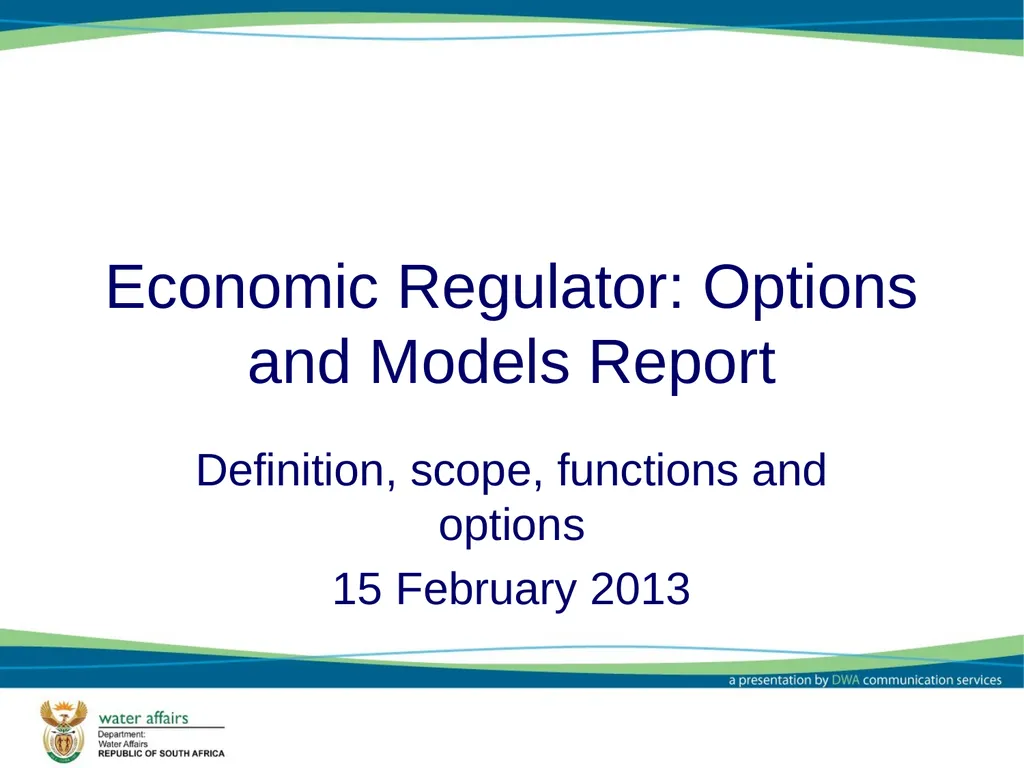
Economic Regulator: Options and Models Report
Author: giovanna-bartolotta | Published: 2025-06-27
Description: Economic Regulator: Options and Models Report Definition, scope, functions and options 15 February 2013 Content Definition of Economic Regulation Scope of Economic Regulation Regulatory Models Options Criteria for assessment Problem
Download Presentation
Download the PPT/PDF: Download
Transcript:
Loading transcript…